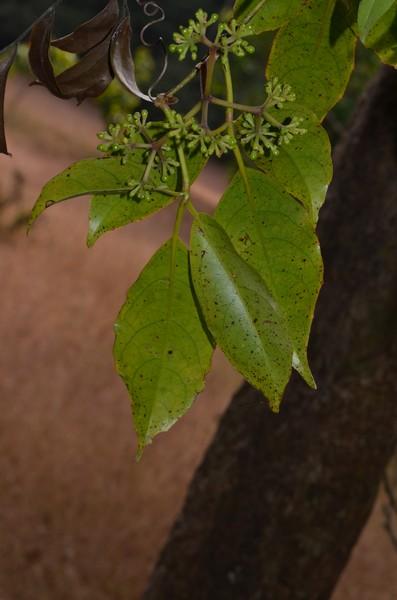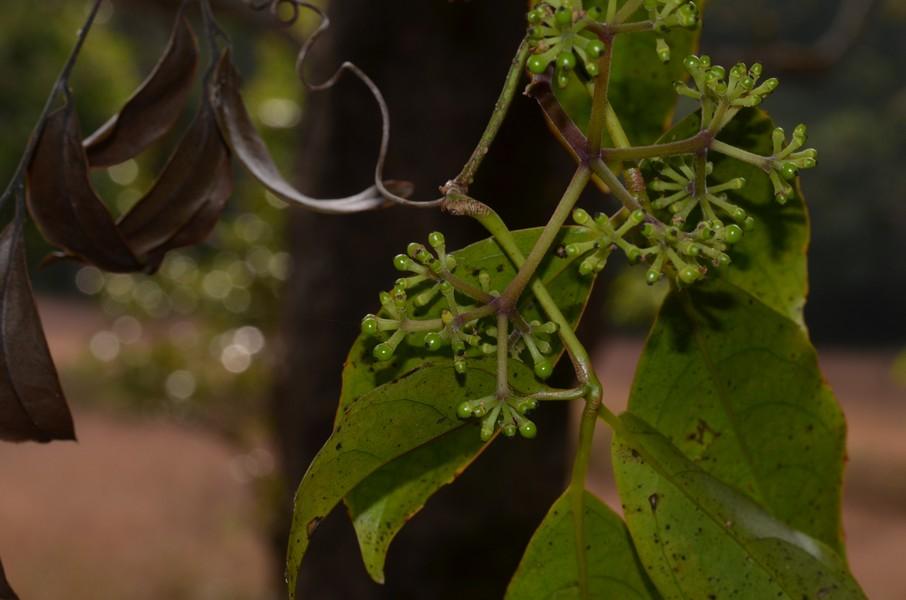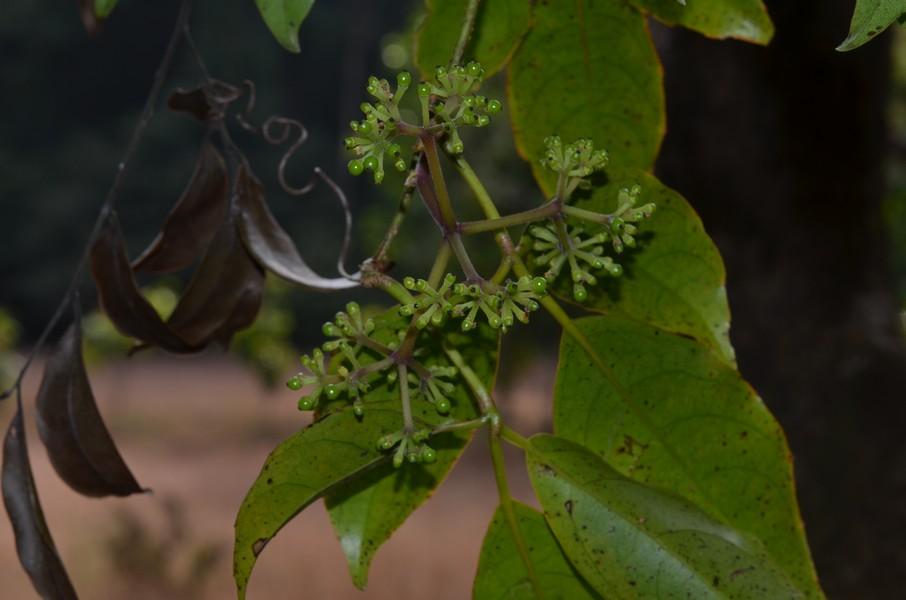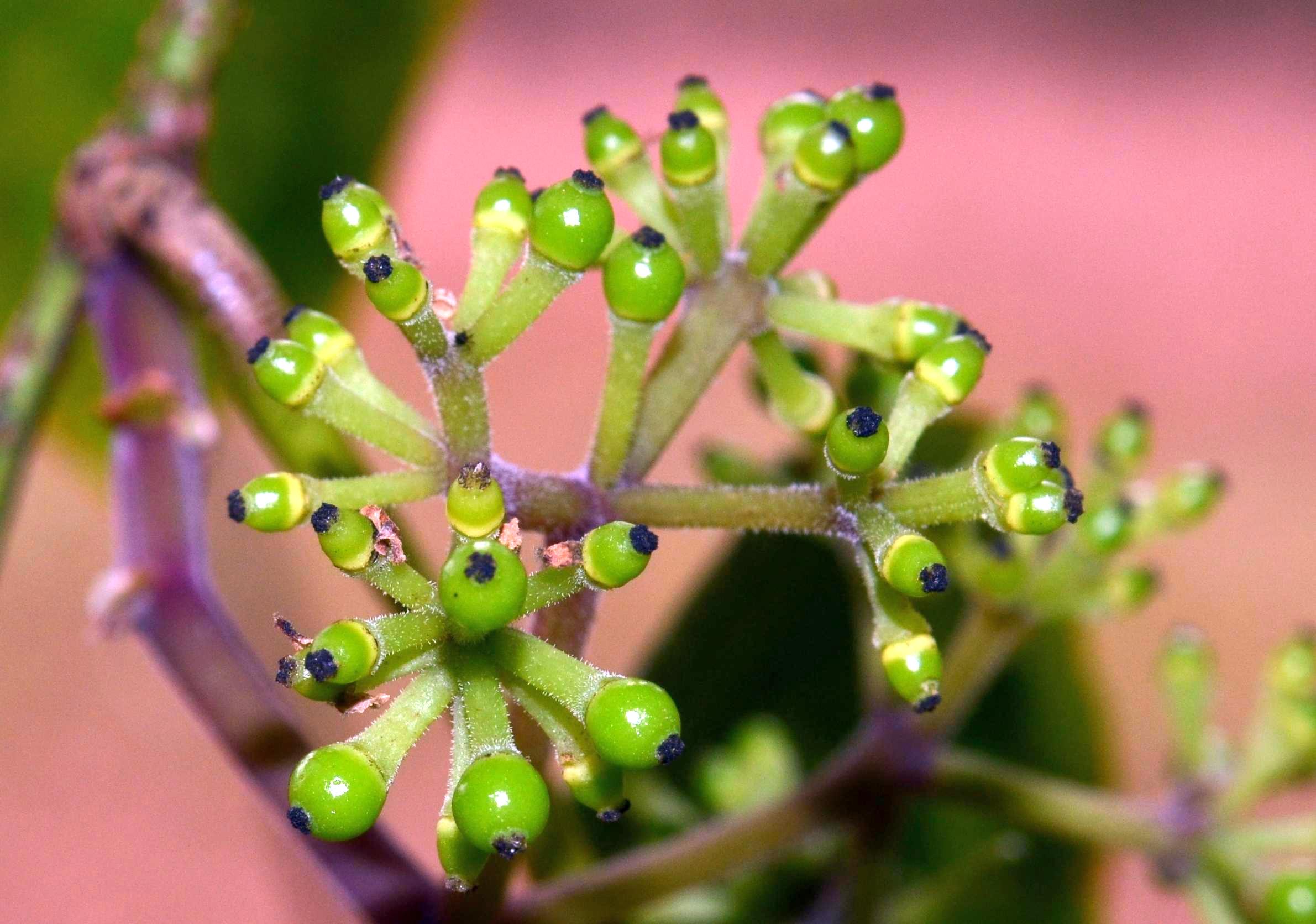|
Tetrastigma gamblei B.V.Shetty & P.Singh, Kew Bull. 42: 933 1987. (syn: Tetrastigma canarense Gamble);
India (Maharashtra, Karnataka, Kerala) as per Catalogue of Life;
Scandent shrub; branches terete, slender; tendrils simple or 2-fid. Leaves 3-foliolate, glabrous. Petioles 4-9 cm long; terminal leaflet elliptic to obovate, cuneate at base, serrate-dentate to subentire at margin, acuminate at apex, 7-11 x 4-7.5 cm; petiolules 1.5-2.5 cm long; lateral leaflets elliptic, slightly oblique at base, apex and margin as in terminal leaflet, 5-10 x 3.5-6.5 cm; petiolules 0.5-1 cm long. Inflorescences umbelled cymes, ca 3 cm long; peduncles 1-2 cm long. Flowers pubescent; pedicels ca 2 mm long. Calyx subtruncate or obscurely 4-lobed. Petals oblong-ovate, acute at apex, ca 1.75 x 0.8 mm. Disc membranous, covering base of ovary. Stigma sessile. Berries globose, ca 6 mm, 1-seeded; seed subglobose, ca 6 x 5 mm, transversely striate on sides; adaxial and abaxial surfaces with longitudinal furrows; chalaza spatulate. Flowering and fruiting: November-March
Evergreen forests
Peninsular India
(Attributions- Dr. N Sasidharan (Dr. B P Pal Fellow), Kerala Forest Research Institute, Peechi from India Biodiversity Portal)
ANFEB25 Vitaceae climber for ID : 9 posts by 3 authors. Attachments (5)
Family: Vitaceae
Date: December 2014 Place: Agumbe, Karnataka Habit: Climber I only give you some tips –
Thank you
Tetrastigma species in eFloraofindia (with details/ keys from published papers/ regional floras/ FRLHT/ FOI/ Biotik/ efloras/ books etc., where ever available)
Thank you for your opinion and advise, …
Vitaceae is a complex family! While ferruginous-tomentose inflorescence is a feature of T. leustaphylum, nearly entire leaves are feature of T. gamblei. Moreover, young fruits of the later are said to be yellow as per book link. the hint of which can be seen at the base of berries in pic DSC_0390. Who knows those berries won’t turn yellow entirely and then red when ripe! Again sizes are essential. Of course flower-fruiting time doesn’t tally, but how much these species were studied? And how correct are the resources available in the net?
Meanwhile check one of your modified pic.
Attachments (1) Sir, you have done the bulk of the job and provided me with keys, descriptions and even my photo from a different perspective! I agree with you.
I also agree with you on another matter- the lack of exact measurements. <.8 cm across in T. gamblei and >1.2 cm across in T. leucostaphylum. Lesson learnt. Will make sure to click with a scale henceforth. Also, I do wonder what the colour of berries in young T. leucostaphylum is. …, if you search KEW herbaria you will find it very interesting how closely these plants, lanceolaria and allied species (muricata, sulcata, nilagirica etc) look like.
In FBI Vitis lanceoalria and Vitis muricata are synonymous. In FI V. lancelolaria leaves are remotely sharply serrulate, texture rather fleshy.,,, flowers small yellow. FI is silent on fruits. Cissus faminea Roxb. has “a little crenulate” leaflets… so, I am in total darkness.
In Wight’s illustration leaves of muricata are serrate or serrulate.
I agree that this complex of Vitis lanceolaria is very complicated and there is 1:1 chance of wrong ID. Please check your local flora if they have more elaborate description.
Attachments (7)
I will also go with T. gamblei Shetty & Singh as suggested by … and as per keys in Flora of India at Keys as per efi thread and as per comparative images at Tetrastigma
References:
Catalogue of Life The Plant List Ver.1.1 World Flora Online IPNI
Flora of Karnataka high resolution specimen GBIF (High resolution specimens) POWO India Biodiversity Portal IBIS Flora Kerala plants Flora of Eastern Ghats: Hill Ranges of South East India, Volume 1 By T. Pullaiah, D. Muralidhara Rao (2001- keys with details)
|
Tetrastigma gamblei
Updated on December 24, 2024





